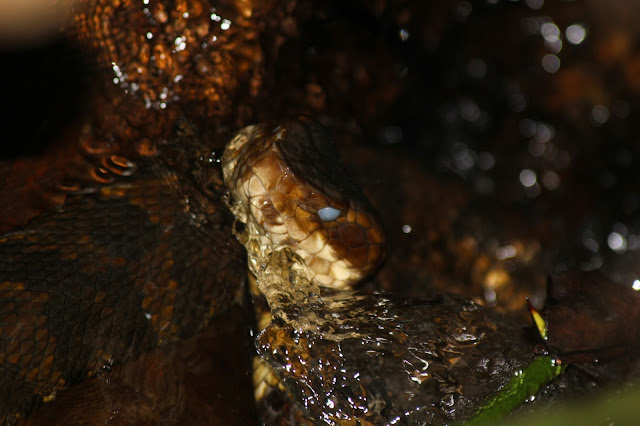The pair of humans emerged from their strange transportation device, bringing their offspring with them. The male and the baby approached us, probably looking for some easy entertainment while the female was in the stinky-box. We walked towards them, the opportunity to receive some free food too great to pass up.
As we drew closer, disappointingly, they had still not thrown us any food.
We decided to stand around for a few minutes in case they finally decided to give us something.
I tugged at the fishing hook that had been stuck in my skin for several days now, since all this waiting had made me notice the itching again.
Soon, the female emerged from the stinky-box and all three of the humans began pointing towards me and conversing noisily.
The female and the baby went into their machine and came out with a bag of some kind... were they going to finally give me some food? They were!
As my wife and I ate up all the food the humans threw on the ground, I was suddenly attacked by the male. He grabbed me with both of his hands and pushed me firmly against the ground. I struggled at first, but then realized I could do nothing to resist and waited to see what the humans would do to me.
Then, the female took the male's place, and he began tugging at the hook stuck in my side. I began to wonder if they were actually trying to help me, unlike those loud and immoral humans who put the hook in me in the first place. When he finally removed the hook completely, I immediately flew off to the edge of the lake, unable to thank him.
The male held the hook out in his hand for the baby, who was holding a strange device, to look at.
I groomed around the area where the hook was, unfortunately ending up with a mouthful of feathers.
I then resumed my daily routine, chasing off another duck with a chomp on the wingtip.
This is just my interpretation of what one of the ducks may have been thinking throughout the ordeal, we may never know what runs through the minds of animals, or how they feel about encounters with humans throughout their lives. What do you think?
-Hunter
-Hunter































